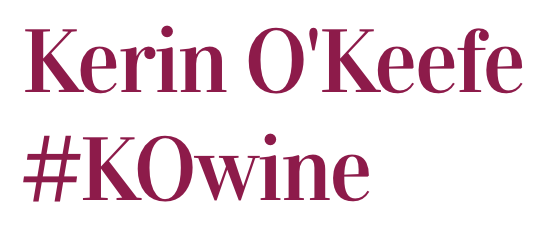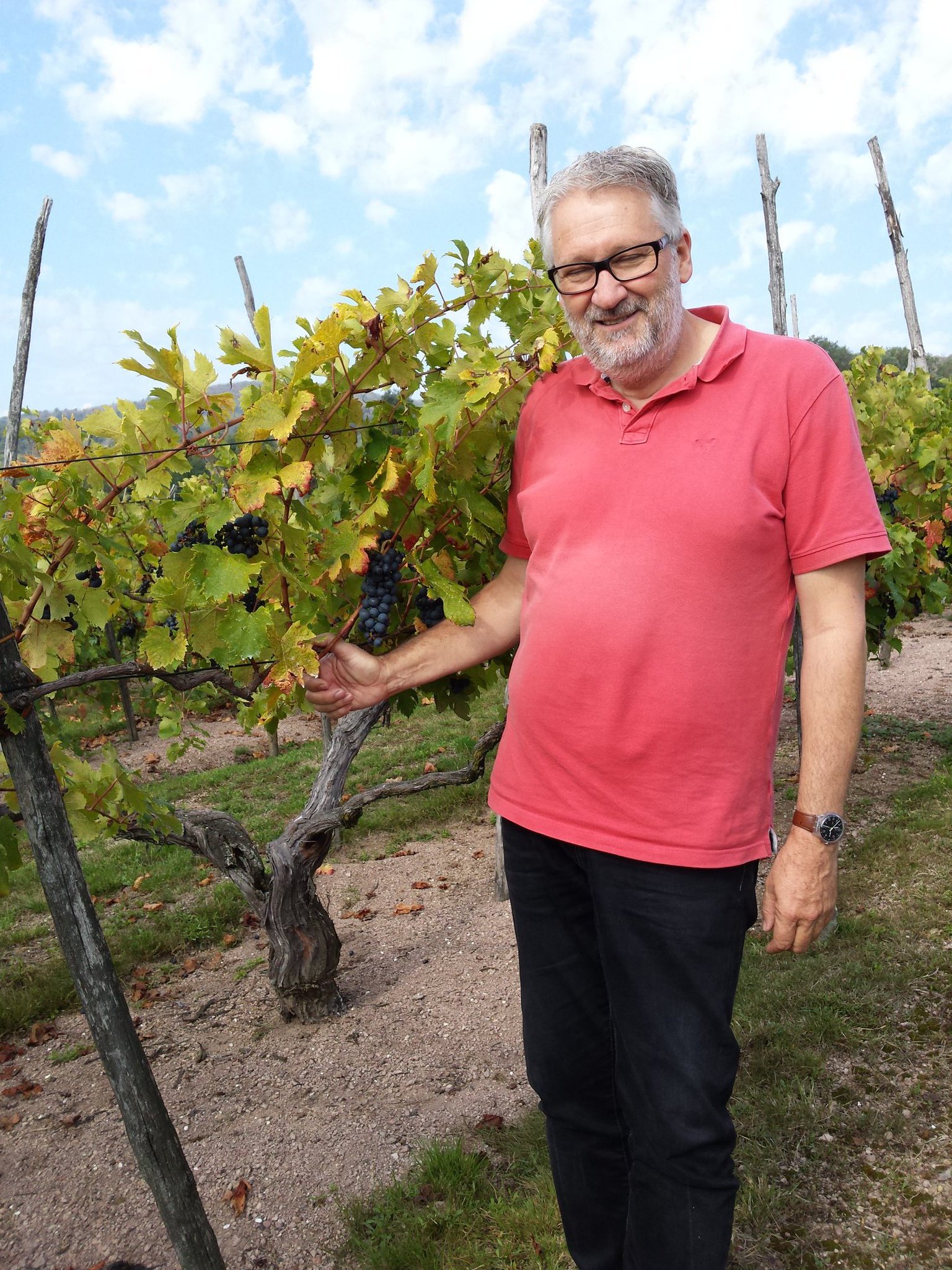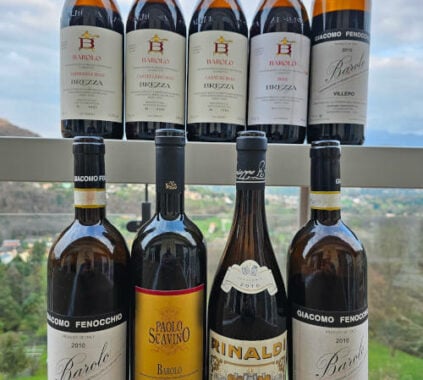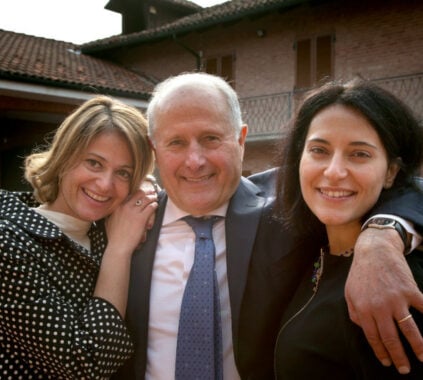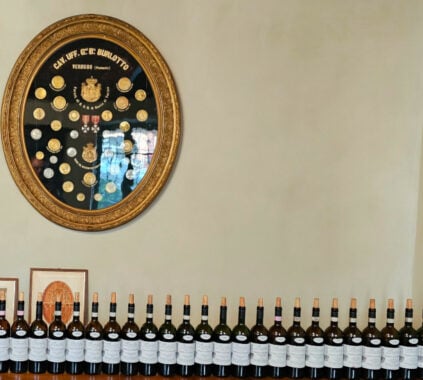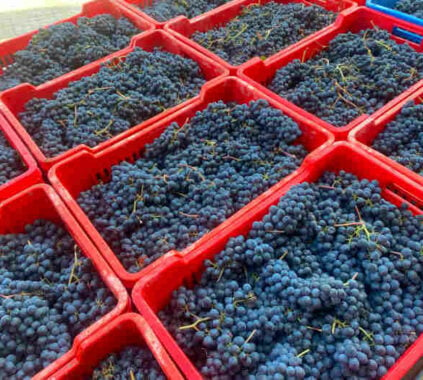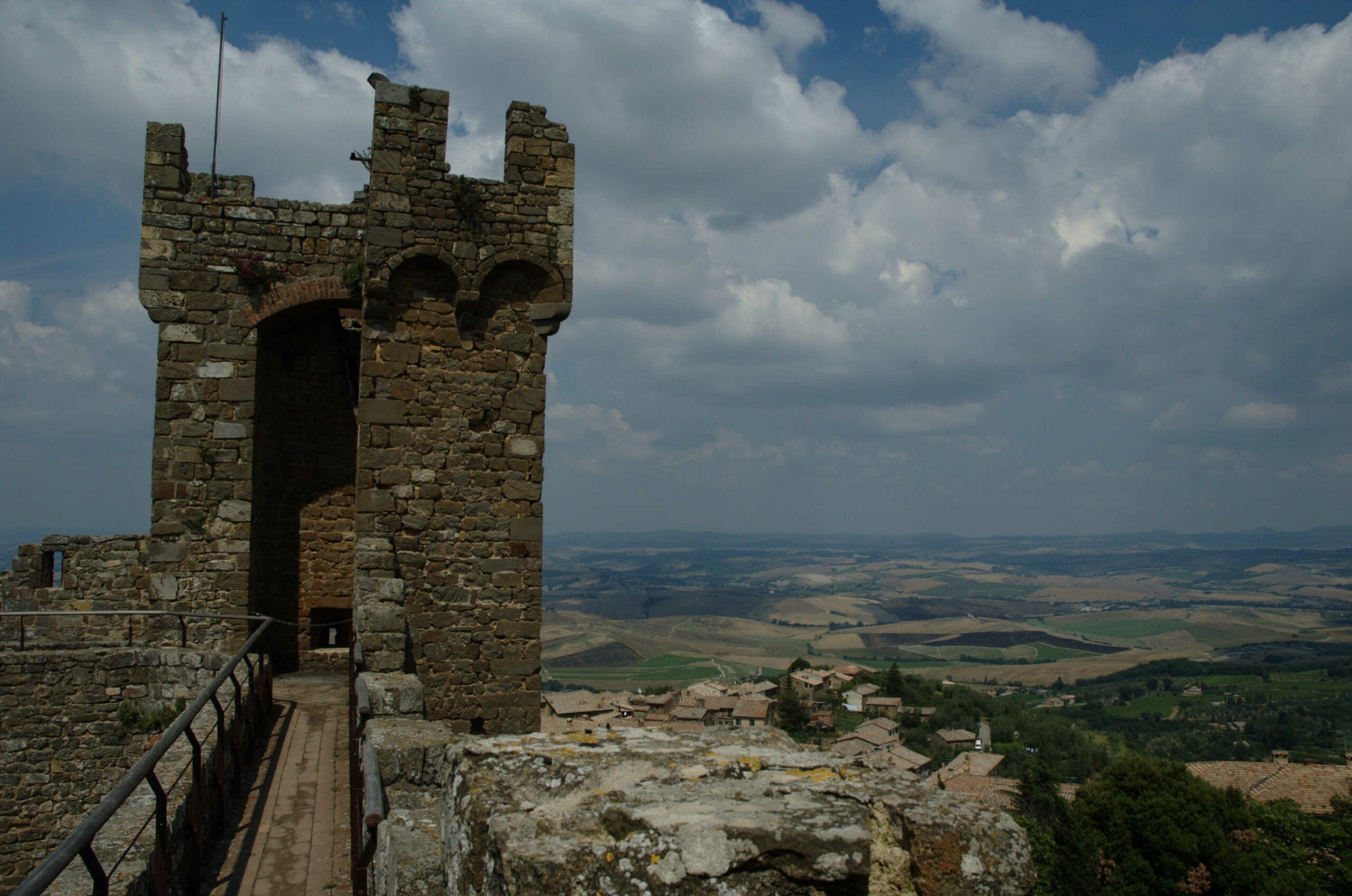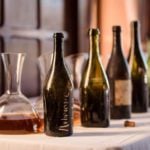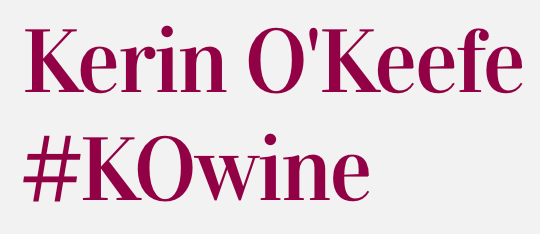If you’re a fan of Nebbiolo – the sole grape behind Barolo and Barbaresco – you’ll love the radiant, mineral-driven Nebbiolos and Nebbiolo-based offerings from Alto Piemonte.
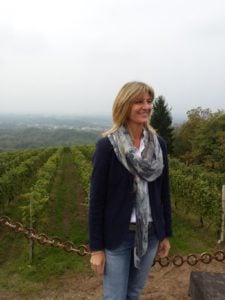
© Paolo Tenti | Cinzia Travaglini in one of her vineyards in Gattinara
Vibrant and loaded with finesse, the best are drop-dead gorgeous, possessing age-worthy structures and impeccable balance. And if warmer temperatures and drier summers are pushing alcohol levels to the extreme in other areas, vineyard altitudes, cooler temperatures and highly acidic soils in Alto Piemonte make it rare to find wines above 14% abv.
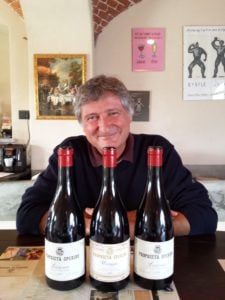
© Kerin O’Keefe | Paolo De Marchi with some of his Proprietà Sperino bottles
Located at the foothills of the northern Piedmont Alps, the most exciting wines come from five small growing areas: Lessona, Gattinara, Ghemme, Boca and Bramaterra that lend their names to the wines.
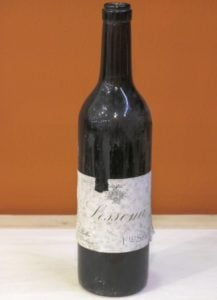
A bottle of 1921 Lessona Sella, tasted during a Master Class at Vinitaly 2017
The wines are steeped in history: in the late 1800s, Alto Piemonte boasted almost 45,000 hectares (111,197 acres) of vineyards, most of them now long gone. Reds made with Nebbiolo (locally called Spanna) – often blended with other local grapes, like Vespolina and Uva Rara – were already imported to the US in the latter half of the 19th century, decades before anyone had heard of Barolo or Barbaresco.
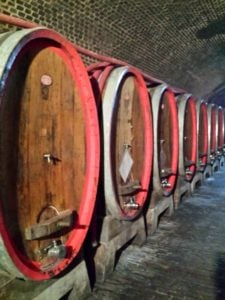
© Kerin O’Keefe | Large Slavonian casks at Proprietà Sperino
Then, in the early 1900s, after outbreaks of devastating vine diseases and a catastrophic hailstorm in 1905 destroyed entire vineyards, growers abandoned agriculture en masse to work in the booming textile mills in the nearby city of Biella.
Thanks to a few brave producers, Alto Piemonte is now undergoing a full-blown Renaissance.
Lessona DOC
As our truck bumps along a narrow dirt road through dense, overgrown woods, I can’t help but wonder if Giacomo Colombera, co-owner of Colombera & Garella, has gotten lost. Then, like a mirage, a large, perfectly maintained vineyard comes into view, surrounded by trees.
“Up until the early 1900s, there were about 200 hectares of vineyards in Lessona,” says fellow passenger Cristiano Gallera, a local consulting enologist and the other half of Colombera & Garella, one of the youngest and most dynamic firms in Alto Piemonte. “Now there are just 20 under vine. The rest [is] overgrown with woods.”
Winemaking in Lessona has recently been revived, a common thread among the other denominations. Only Tenuta Sella, originally a textile firm that started acquiring vineyards in the late 1600s, has continuously made wine. Until about 15 years ago, however, those wines were reserved largely for family members and employees of the firm’s several businesses. The remainder was sold locally around Biella, a historic textile center.
That all changed in 1999, when Paolo de Marchi of the Chianti Classico estate Isole e Olena and his son, Luca, relaunched Proprietà Sperino, the family’s historic estate in Lessona. Producers across Alto Piemonte credit de Marchi’s arrival as the rebirth of winemaking in the area.
Paolo grew up in Turin and summered at the family’s Lessona estate. He long dreamed of reviving the area’s winemaking tradition. Proprietà Sperino’s first release was from the 2004 vintage.
“I was completely surprised by the wine’s finesse and the savory, almost salty finish,” says Paolo.
Lessona wines abound with elegance, thanks to mineral-rich yellow sand and vineyard altitudes that range between 722 and 1,181 feet above sea level. They offer bouquets of roses and red woodland berries that follow over to the palate, along with a pronounced mineral vein. Lessona wines have an almost ethereal character, but noble tannins and vibrant acidity impart serious aging potential.
Producers can make Lessona exclusively with Nebbiolo, or they can add up to 15 percent of Vespolina, an “offspring” of Nebbiolo, and/or Uva Rara, a common blending grape.
Gattinara DOCG
The best known of all the Alto Piemonte wines, those from Gattinara are part of a tradition that reaches back to the ancient Romans. In the late 1800s, the denomination boasted a significant 1,482 acres of vineyards.
Gattinara is practically synonymous with Travaglini and the firm’s distinctly shaped, curved bottle. Established in the 1920s by Clemente Travaglini, the family-run winery owns 146 of the 247 acres registered to Gattinara production. It makes bright, structured reds exclusively from Nebbiolo.
“The soil in Gattinara is composed of Monte Rosa’s sedimentary rocks, granite and iron-rich porphyry of volcanic origin,” says Cinzia Travaglini, the great-granddaughter of Clemente, who manages the winery operations. “Unlike the Barolo and Barbaresco zones, there’s no limestone here, and no clay.”
Gattinara lies in the heart of an area that was strongly influenced by an ancient super-volcano that collapsed 280 million years ago. The denomination’s reddish, rocky soils are high in acidity, which lend firm but silky tannins. Those soils also impart marked mineral sensations that evoke iron and sometimes even an intriguing hint reminiscent of rust.
Vineyard altitudes 1,050–1,575 feet above sea level see significant day-night temperature changes during the growing season. These temperature swings generate complexity, intense aromatics and racy acidity, while cooling winds keep grapes rot-free.
Production regulations stipulate that Gattinara wines include at least 90 percent Nebbiolo. Though producers can blend in small amounts of Vespolina and Uva Rara, most use only Nebbiolo.
A classic Gattinara boasts red berry and violet aromas, fresh acidity, energizing mineral and taut, polished tannins. Gattinara tends to be more approachable upon release than Barolo, but still boasts cellarworthy structure and ages well for decades.
Ghemme DOCG
Across from Gattinara on the other side of the Sesia River is Ghemme, where winemaking pre-dates the ancient Romans. Ghemme is often compared to its more famous neighbor, but while there are similarities between the two wines, fundamental differences set them apart.
Made in the commune of Ghemme and part of nearby Romagnano Sesia, the denomination’s vineyard area is about half that of Gattinara, at about 125 acres. Ghemme’s vineyards are generally lower in elevation than those in Gattinara. They range between 820 and 985 feet above sea level.
Alberto Arlunno runs his family’s Antichi Vigneti di Cantalupo winery, the denomination’s leading estate, which traces its winemaking origins to 1800. He says the biggest difference between Gattinara and Ghemme is the soils.
“Unlike Gattinara and other areas of Alto Piemonte, where one soil type usually dominates, the soils in Ghemme are incredibly complex,” he says. “We also have some clay in the higher areas, and here and there, some porphyry.”
Arlunno says the soils owe their complexity to the Monte Rosa glacier, which straddles the border of Italy and Switzerland. Its retreat across what’s now the Ghemme growing zone deposited rocks like granite, quartz and other pebbles that break down after the winter rains and take on a sandy consistency.
The poor soils are perfect for Nebbiolo, and the increased focus on Piedmont’s flagship grape has been a key improvement in the area over recent years. Most producers today make Ghemme exclusively from Nebbiolo, although producers can also use up to 15 percent Vespolina and/or Uva Rara.
A quintessential Ghemme is elegantly structured and fragrant. It offers sensations of rose, violet, woodland berry, spice and mineral set against a backbone of vibrant acidity and refined tannins. Aging adds even more complexity.
Boca DOC
“In the late 1800s, there were 9,885 acres of vineyards in Boca,” says Christoph Kuenzli, owner of Boca’s trailblazing winery, Le Piane. “When I arrived in the early 1990s, there were just 25.”
A Swiss wine merchant who specialized in Italian wine, Kuenzli first visited the area on the advice of Paolo de Marchi. He told Kuenzli about an unheralded red that he was sure to like, made by Antonio Cerri, one of the last winegrowers to produce exceptional Boca. Intrigued, Kuenzli looked up Cerri, tried the wines and was hooked.
Cerri, in his 80s, was considering retirement. By 1995, Kuenzli was leasing Cerri’s small vineyard and cellars, which he purchased in 1998 to establish Le Piane.
Following in Cerri’s footsteps, Kuenzli shuns harsh chemicals in the vineyards and uses no modern technology in the cellar. Fermentation is spontaneous, with wild yeasts.
Le Piane now has 22 acres of vineyards, including six acres with 100-year-old vines planted in the traditional Maggiorina system, where three vines are grouped together and trained upward to form a goblet. Thanks to Le Piane’s success, there are now 10 producers in Boca and a total of 75 acres under vine.
The ancient super-volcano is responsible for the denomination’s porphyritic soils, which crumble easily and turn to fine gravel on the surface. Boca has the highest vineyards in Alto Piemonte, up to 1,700 feet above sea level.
It also boasts a warm microclimate in an otherwise cold area, with high daytime temperatures and cool nights in autumn. South-facing vineyards benefit from intense sunshine, while the surrounding hills protect vines from cold Alpine winds, perfect conditions for ripening Nebbiolo. Boca must be made using between 70 and 90 percent Nebbiolo, and the balance Vespolina (which lends intense spice notes) and/or Uva Rara.
Fragrant, structured and vibrant, Boca boasts red berry, mineral and white pepper flavors set against an elegant backbone of polished tannins and firm acidity.
Bramaterra DOC
Bordered by Lessona on the west and partly by Gattinara on the east, Bramaterra comprises seven separate townships, where the hillside vineyards range between 885 and 1,475 feet above sea level. The towering Monte Rosa protects the area from cold Alpine winds while the altitude creates sharp day-night temperature variations.
Bramaterra has a varied soil composition. Volcanic, porphyritic soils make up the backbone, but the western parts have sandy marine deposits similar to the soils found in Lessona.
Paolo Benassi, Sella’s enologist, says that like Lessona, Bramaterra has low pH soils, which helps vine roots absorb microelements.
“The main difference between Lessona and Bramaterra is that Bramaterra is made up of porphyry soils and [quartz-rich] rock, which impart more iron sensations,” he says.
Benassi says that the highest areas of Bramaterra are rich in rock fragments. In particularly dry vintages, it can result in wines that are more concentrated and structured than Lessona.
Headquartered in Lessona, Sella also owns a 49-acre plot of vineyards in Bramaterra. Its single-varietal Bramaterra is made with vines that average 45 years old. Sella’s I Porfidi bottling is made with the best grapes from 80-year-old vines planted on the estate’s highest hill.
Bramaterra is a blend made up of 50–80 percent Nebbiolo, a maximum of 30 percent Croatina and a maximum of 20 percent Uva Rara and/or Vespolina. A textbook Bramaterra is racy and structured, with intense red berry, spice and mineral sensations.
Alto Piemonte Boca Bramaterra Gattinara Ghemme Lessona Nebbiolo other denominations Piedmont Uva Rara Vespolina
Last modified: March 22, 2024
